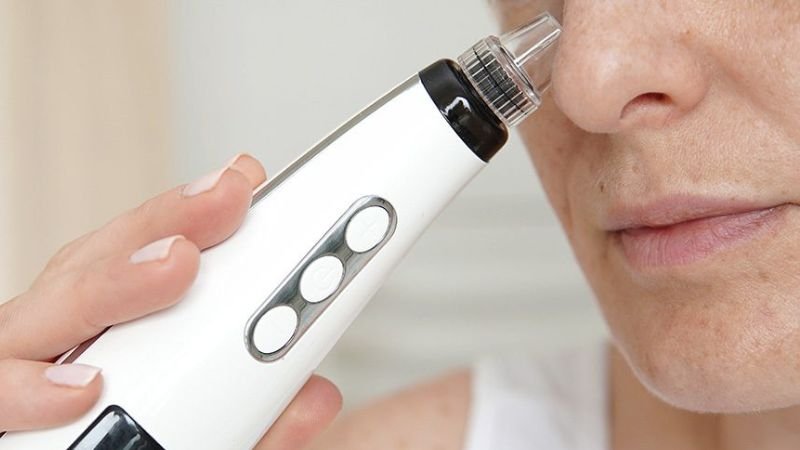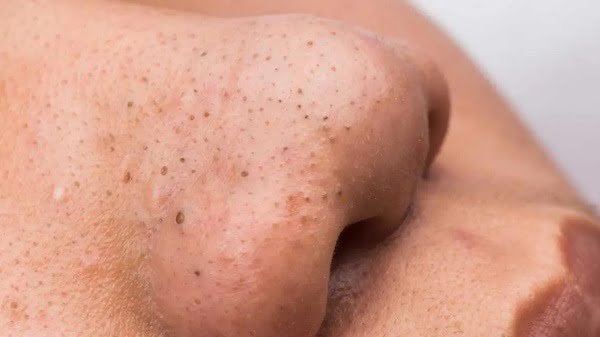Introduction
Blackheads, those pesky little spots that seem to pop up at the most inconvenient times, have led many to seek out various methods of removal. One popular tool that has gained attention in recent years is the blackhead vacuum. These devices claim to effortlessly suction away blackheads, leaving behind clear, smooth skin. But are they truly safe to use?
Understanding Blackhead Vacuums
Blackhead vacuums, also known as pore vacuums or comedone extractors, typically operate using suction power to pull out blackheads and other impurities from the skin. They often come with different nozzle attachments designed for various areas of the face and different types of skin concerns.
Safety Concerns of vaccum blackhead cleaner
- Potential for Skin Damage: Excessive suction or improper use of the device can lead to skin damage, including bruising, redness, and even broken capillaries. Using too much suction or leaving the device in one area for too long can cause irritation and inflammation.
- Risk of Infection: If the device is not properly cleaned and sanitized between uses, there is a risk of spreading bacteria and causing infection. Additionally, using the vacuum on open or irritated skin can increase the likelihood of infection.
- Not Suitable for All Skin Types: Individuals with sensitive skin or certain skin conditions, such as rosacea or eczema, may find that blackhead vacuums exacerbate their symptoms or cause further irritation.
Tips for Safe Usage
Start with Clean Skin: Before using the blackhead vacuum, cleanse your face to remove any makeup, dirt, or oil. This will help prevent the spread of bacteria and ensure better results.
Use on Low Suction Setting : Begin with the lowest suction setting and gradually increase as needed. Avoid applying too much pressure or leaving the vacuum in one area for too long.
Limit Usage : Using the blackhead vacuum too frequently can irritate the skin and cause damage. Limit usage to once or twice a week, depending on your skin’s tolerance.
Sanitize Regularly : Clean the nozzle and other attachments after each use to prevent the buildup of bacteria. Follow the manufacturer’s instructions for proper cleaning and maintenance.
Expanding in safety of blackhead vaccums
Precautions for Specific Skin Conditions: Individuals with certain skin conditions, such as acne-prone skin or sensitive skin, should exercise extra caution when using blackhead vacuums. Dermatologists may recommend avoiding areas of active breakouts or inflamed skin to prevent further irritation.
Risk of Hyperpigmentation: Prolonged or aggressive use of blackhead vacuums can potentially lead to post-inflammatory hyperpigmentation, especially in individuals with darker skin tones. This occurs when the skin becomes darker in areas of inflammation or injury.
Effectiveness on Stubborn Blackheads: While blackhead vacuums can effectively remove surface-level blackheads, they may not be as effective for deeply embedded or stubborn blackheads. In such cases, dermatologists may recommend professional extractions or other targeted treatments for optimal results.
Combination with Other Skincare Products: Dermatologists often emphasize the importance of combining the use of blackhead vacuums with other skincare products, such as exfoliants or pore-minimizing serums. This can help improve the overall effectiveness of the treatment and maintain clear, healthy skin.
Long-Term Effects: Limited research exists on the long-term effects of using blackhead vacuums regularly. While they may provide immediate results, it’s essential to consider the potential impact on the skin’s elasticity and overall health over time. Long-term studies are needed to fully understand the implications.
Alternative Treatments: In addition to professional extractions and topical treatments, there are various alternative treatments available for blackhead removal, such as chemical peels, microdermabrasion, and laser therapy. Dermatologists can assess your skin and recommend the most suitable treatment option based on your individual needs and preferences.
Conclusion
While blackhead vacuums can be a tempting solution for removing blackheads and achieving clearer skin, it’s essential to approach them with caution. Like any skincare tool, they come with potential risks, particularly if used improperly. By following the tips for safe usage and being mindful of your skin’s needs, you can enjoy the benefits of a blackhead vacuum without compromising your skin’s health and safety.
FAQs related to "Are blackhead vacuums safe?"
Blackhead vacuums can be safe for most skin types when used correctly and cautiously. However, individuals with sensitive skin or certain skin conditions may experience irritation or adverse reactions. It’s essential to consult a dermatologist before using a blackhead vacuum, especially if you have concerns about your skin type.
When used improperly or with excessive suction, blackhead vacuums can potentially cause skin damage, including bruising, redness, and even broken capillaries. To minimize the risk of scarring or skin damage, start with the lowest suction setting and avoid prolonged use in one area.
Dermatologists typically recommend using a blackhead vacuum no more than once or twice a week to avoid overstimulating the skin and causing irritation. It’s essential to listen to your skin’s response and adjust usage frequency accordingly.
Limited research exists on the long-term effects of using blackhead vacuums regularly. While they may provide immediate results, it’s essential to consider the potential impact on the skin’s elasticity and overall health over time. Long-term studies are needed to fully understand the implications.
Proper cleaning and maintenance are crucial for ensuring the safety and effectiveness of a blackhead vacuum. Clean the nozzle and other attachments thoroughly after each use to prevent the buildup of bacteria. Follow the manufacturer’s instructions for sanitization and storage to prolong the device’s lifespan.
While blackhead vacuums can effectively remove surface-level blackheads, they may not be as effective for deeply embedded or stubborn blackheads. In some cases, professional extractions or other targeted treatments may be necessary for optimal results.
Yes, there are several alternatives to blackhead vacuums for removing blackheads, including manual extraction tools, chemical exfoliants, pore strips, and professional treatments such as facials or microdermabrasion. It’s essential to consult a dermatologist to determine the most suitable option for your skin type and concerns.












